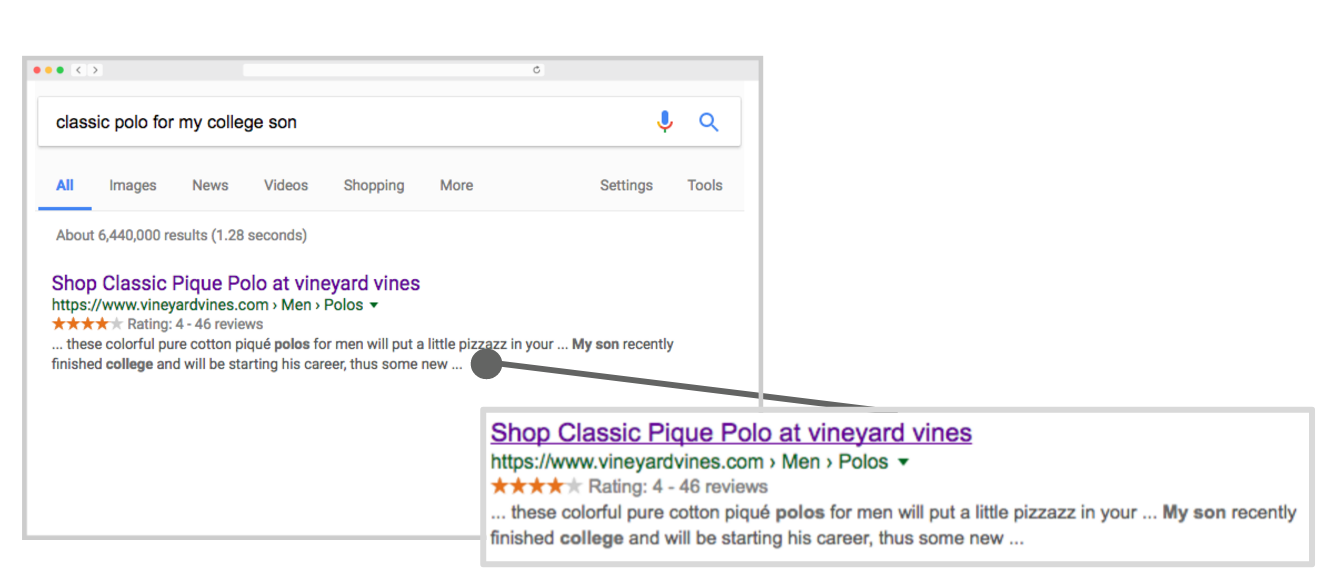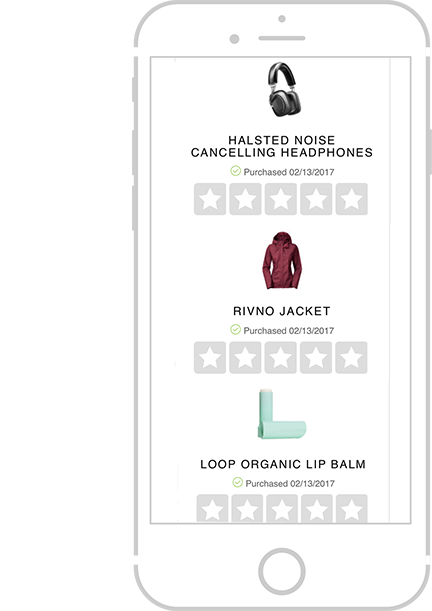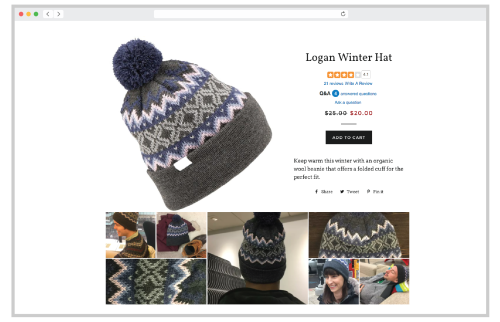Today’s consumers have nearly endless choices when it comes to shopping. In order to compete — and win — in this increasingly competitive marketplace, it’s critical for brands and retailers to provide consumers with the information they’re looking for when researching and purchasing products — including reviews, photos and videos submitted by others like them.
Earlier this month, Cheryl Amaya, Director of Customer Success at Workarea, joined us for our monthly webinar. During the session, we discussed the different types of UGC, the role they play in the shopping journey, and how brands and retailers can leverage these different types of content to compete and win. During the webinar, I shared these five tips for optimizing your business with UGC.
1. Improve Organic and Paid Search Results with UGC
Our research on the path to purchase found that more than a third (35%) of consumers start the purchase journey on a search engine. The good news is, ratings and reviews can help boost your presence on search engines by providing fresh, keyword rich content that search engines (and consumers) love. For example, let’s say you navigate to Google and search for “classic polo for my college son.” The first result is a polo shirt from Vineyard Vines, thanks to a review that includes the keywords you searched for. Plus, since the website is structured according to Schema.org standards, it appears in the search results, enticing you to click through.

Ratings and reviews can also improve your paid search results. For starters, adding star ratings to Product Listing Ads will increase your clickthrough rate. And Selling Ratings allow you to display stars in search results, capturing the attention of even more online shoppers.
[bctt tweet=”35% of consumers start the purchase journey on a search engine.” username=”powerofreviews”]
2. Optimize for UGC Collection
The #1 best practice for collecting more user-generated content — such as reviews, photos and videos — is to ask for it. Be sure to send a post purchase email asking your customers to review recently purchased products. We’ve found that up to 90% of all review content is a result of a post purchase email. Make it extremely clear what you’re asking the consumer to do. For example, if you’re looking to generate more visual content, put the ask in the subject line and in the body of your email.
In addition, remember that many orders include more than one item. In fact, in the PowerReviews Network, more than 60% of orders have more than one product. So make it easy for shoppers to submit reviews for all purchased products from one page.

3. Optimize for Mobile
Today’s consumers are doing just about everything from their phones — including writing and reading reviews. At PowerReviews, we saw an 87% increase in reviews written on mobile in 2016 compared to 2015.
Make sure the entire process of submitting reviews, photos and videos can easily be completed on a small screen. And instead of requiring consumers to navigate to a third party site such as YouTube in order to submit a video, allow them to upload this content directly to your website from their phones.
4. Highlight Visual Content Beyond the Product Page
PowerReviews research found that 88% of consumers specifically look for visual content submitted by other consumers before making a purchase. Once you’ve collected great photos and videos from your consumers, display them where future shoppers can easily find them. Start by featuring this visual content in an engaging gallery on your product pages. Then think about ways you can leverage this content on other areas of your website, including your homepage, category pages, and campaign-specific landing pages.

In addition, think about ways you can feature this visual content in your other print and digital marketing initiatives. For example, Apple prominently features user-generated photos in their billboard campaigns to inspire future shoppers.

5. Identify and Engage Loyalists to Generate Content
Consumers who are passionate about a brand or product are priceless. Identify loyalists not just by spend, but also by the amount and quality of the content they’ve submitted. Look at the number of reviews they’ve written, the products they’ve reviewed, how often their reviews are voted as “most helpful,” and whether they’ve submitted high-quality images and videos as part of reviews.
Once you’ve identified these loyalists, reach out to ask them to contribute reviews, photos, and videos. Consider offering them incentives — such as loyalty points, coupons, free samples or a sweepstakes entry. For the sake of transparency, make sure to appropriately badge reviews that were generated as a result of an incentive. That way, future shoppers understand who wrote each review.
Want to learn what else we discussed during this webinar? Watch the on-demand session now!




